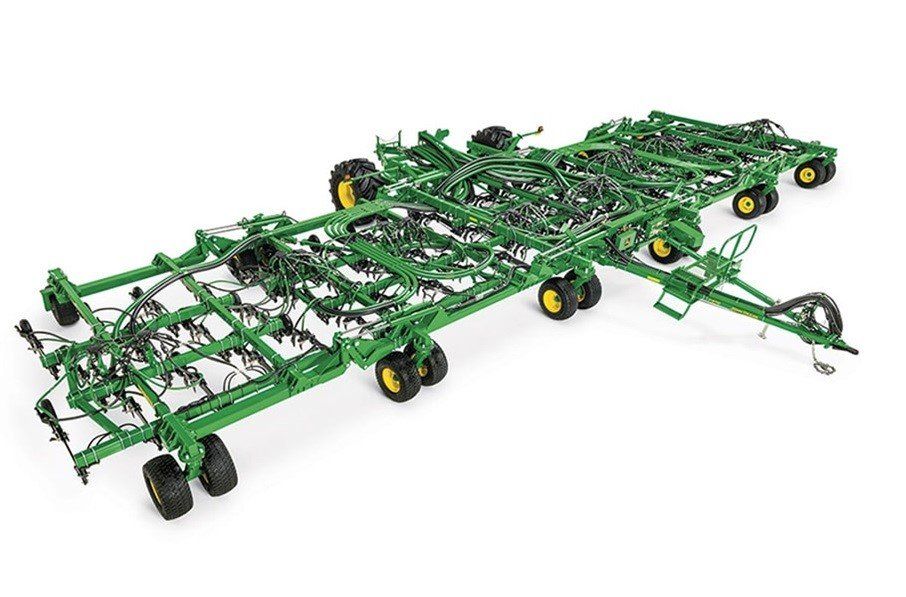1MG FlippingBooks
John Deere introduces new P600 Precision Air Hoe Drill
Small grain farming operations across Australia now have access to a comprehensive choice of precision equipment to meet their unique needs and preferences.

John Deere has introduced the new range of P600 Precision Air Hoe drills, to deliver up to a 15.5% larger working width and 24% weight reduction compared to the P500, to decrease compaction, labour time and fuel consumption, while optimising productivity and seed to soil contact.
Ranging from 12.2 - 27.4 m (40-to-90 foot) working widths, the P600 models include the P640, P650, P660, P670, P680, and P690. Each has 25.4 – 30.5 cm (10-to-12 in.) spacing and new dual knife openers to consistently place fertiliser 3.8 cm (1.5 in.) horizontally and 1.9 cm (0.75 in.) vertically away from the seed for even emergence and equal access to nutrients.
New P600 Precision Air Hoe Drills utilise the existing John Deere naming system. The "P" stands for Precision Hoe; “6” is the series number; followed by the two-digit tool width.
John Deere Precision Ag Segment Manager, Ben Kelly, said the introduction of the P600 lineup would round out John Deere’s integrated seeding solution – to give small grain farming operations across the country a comprehensive choice of equipment to meet their unique needs and preferences.
“Our focus is on providing flexible and adaptable seeding solutions for small grain farmers, which is why we offer tractors in wheel, two-track and four-track configurations, high-capacity Air Carts in tow-behind and tow-between options and, with the launch of the new P600 lineup, seeding bars in a range of working widths for both disc and tyne,” Mr Kelly said.
“All equipment is appointed with precision technology and a JDLink™ connection to the John Deere Operations Center™ making it easy for our customers to monitor what’s happening in the field during seeding and collect valuable data to inform decision making post seeding.”
Mr Kelly said the addition of the P600 would fulfil the requirements of customers both looking to gain productivity to meet tight seeding windows, as well as those prioritising Controlled Traffic Farming.
“The increased working widths will not only mean more hectares can be covered per day, but the inclusion of 12, 18 and 24 metre widths will also suit existing Controlled Traffic Farming systems for marked reductions in compaction,” he said.
“Additionally, the P600 provides ideal seed to soil contact, consistent seed and fertiliser depth, excellent residue flow and stubble management.”
P600 Precision Air Hoe Drills leverage existing integrated John Deere air seeding technologies, improved tyre options for optimal flotation, RelativeFlow™ blockage sensing, and full integration with John Deere tractors and air carts.
RelativeFlow blockage sensing allows farmers to see the flow rate of seed and fertiliser from inside the tractor cab. Sensors are located on all primary towers and secondary hoses to monitor the relative product flow, while providing a better view of the flow rate of seed and fertilser from the cart to the opener. This helps farmers identify problems before potential blockage occurs.
The new P600 Air-Hoe Drill will be available for order in 2023 for delivery in early 2024.
“In the 2023 seeding season, John Deere will have the P600 on-farm in Western Australia to give producers the opportunity to see and experience the product prior to placing an order,” Mr Kelly said.
















